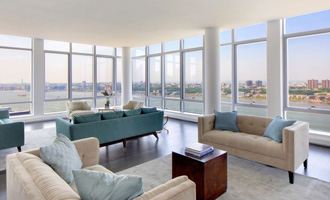Trending
Reality bites: Far fewer properties sell above ask in Q4
Median price falls nearly 8%

The number of Manhattan properties selling for above their asking price dropped significantly in the fourth quarter of 2016, indicating sellers are becoming more pragmatic about the market.
Under 13 percent of all condominiums and co-ops that sold in the last quarter went for above the asking price, according to Douglas Elliman’s most recent quarterly Manhattan sales report. In comparison, nearly a third of sales in the third quarter of 2015 sold for above ask, a record high sparked by bidding wars across the borough. The average discount from asking price also rose sharply year-over-year, going from 3 percent in 2015 to 5 percent in 2016.
Many Manhattan sellers have been reluctant to adapt to the changing market, and still expect to sell at their properties for significant profits. But Jonathan Miller, CEO of appraisal firm Miller Samuel and author of the report, said the figures from the last quarter suggest sellers are becoming more pragmatic.
“There’s been a mindset shift over the last quarter that shows more of a connection between sellers and current market conditions,” he said. “The sellers are more negotiable than they were a year ago. And as a result we’re seeing, with the additional inventory, a sharp decline in bidding wars.”
The average price of a Manhattan apartment rose nearly 8 percent year-over-year to reach $2.1 million, but that figure was driven largely by closings at ultra-pricey projects like 432 Park Avenue. While the new development median sales price rose 44 percent to $2.9 million, the resale price fell 6 percent to $900,000. The number of days on market also jumped nearly 15 percent year-over-year to 94, according to the report.
Miller said the median price of an apartment — which fell nearly 8 percent to just over $1 million — paints the most accurate picture.
The drop, he said, is driven by increased demand for cheaper properties and softening at the top. The median price of a Manhattan condo studio, for example, went from $420,000 in the fourth quarter of 2015 to $523,250 in 2016, a jump of nearly 25 percent. While the median price of a luxury property — which is the top 10 percent of sales — jumped 9.5 percent year-over-year to hit $6.5 million, Miller said the figure is representative of the healthy luxury market in 2014. But the average luxury sale price was nearly 9 percent less than the asking price at the time of contract, nearly twice as big of a discount seen in the previous year.
“It’s a clear break from the somewhat irrational behavior of sellers from the previous three or four years,” said Miller.
The absorption rate, Miller said, most clearly illustrates the popularity of the lower end of the market. Last quarter, the absorption rate for studios was three-and-a-half months, compared to a little over 13 months for properties with at least four bedrooms. That means studios are moving four times faster than larger, more expensive properties.
A separate report from Town Residential found that market-wide, the median price per square foot decreased 3 percent year-over-year to $1,357.
Meanwhile, a report from the Corcoran Group found that the number of contracts signed jumped 7 percent compared to the “tentative” third quarter of 2016.




